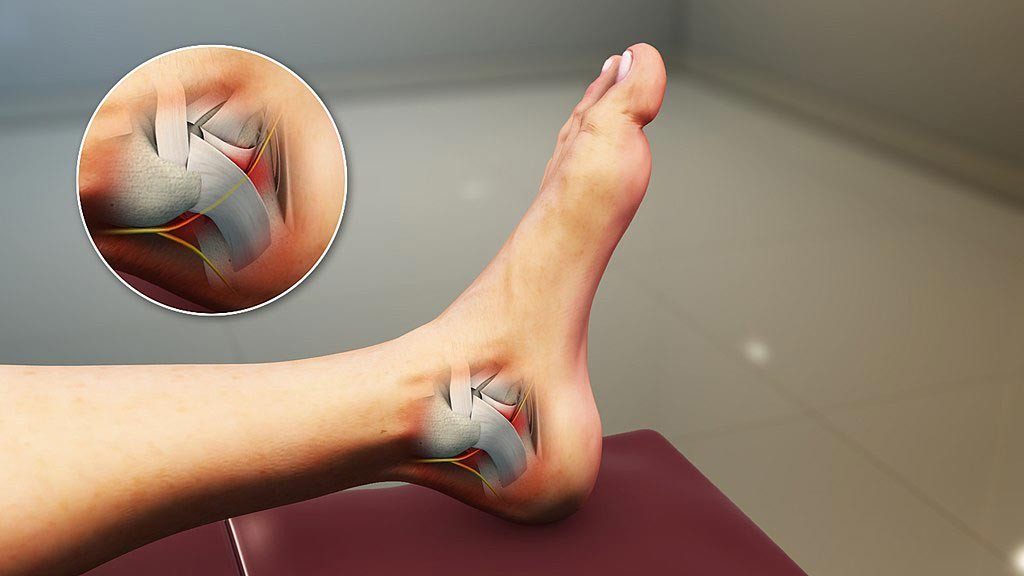Definition
Cubital tunnel syndrome is a collection of symptoms that occur when the ulnar nerve (which controls muscles in the arm, ring finger, and pinky finger) becomes irritated or compressed. There are three main nerves in the arm: the median, ulnar, and radial nerves. The ulnar nerve starts from the lower neck and extends through the arm to the hand. It passes through a tissue tunnel called the cubital tunnel, and pressure on this nerve results in cubital tunnel syndrome.
The ulnar nerve controls some large muscles in the arm, senses sensations at the fingertips, and controls some hand muscles. These muscles help your fingers function, such as typing and playing musical instruments. Therefore, if this condition is not properly treated, it can disrupt daily activities.
Read more: Ulnar Nerve Entrapment Disease - Definition, Causes, Symptoms, and Management.
Causes
Currently, there is no definite cause of cubital tunnel syndrome. However, there are several possible causes, such as:
- Anatomy or tissue structure: Over time, soft tissues around the ulnar nerve may thicken or develop additional muscles. This can hinder muscle function and lead to cubital tunnel syndrome.
- Pressure: When the nerve is compressed, such as when resting on the elbow, you may feel numbness from the forearm to the pinky finger.
- Nerve displacement: The nerve may shift from its normal position, potentially due to repetitive hitting of the medial epicondyle (the protruding part of the lower arm).
- Stretching: Excessive stretching of the nerve can occur if you bend your elbow for a long time, such as when sleeping.
Risk factor
Risk factors for cubital tunnel syndrome include:
- Head injury involving the upper limbs.
- Age over 40 years.
- Activities involving specific repetitive movements (such as throwing).
- Jobs that require prolonged elbow bending.
- Resting the elbow on hard surfaces for long periods.
- Having a cyst near the elbow joint.
- History of elbow dislocation and fractures.
- Obesity.
Symptoms
Although initial symptoms of this disease vary among individuals, common symptoms of cubital tunnel syndrome include:
- Difficulty moving fingers.
- Intermittent stiffness in the hand and fingers.
- Pain on the inner side of the elbow.
- Intermittent tingling or numbness in the hand and fingers.
- Severe symptoms can also cause muscle atrophy in the arm and change the hand shape to resemble a claw.
Diagnosis
Doctors will conduct a physical examination and interview about your symptoms. In addition to symptoms, the doctor may ask about activity history, injuries around the elbow joint, and other relevant medical history.
Additionally, the doctor may recommend tests such as:
- Electromyogram (EMG): This test shows nerve and muscle activity, revealing abnormalities in nerves and muscles.
- X-ray: To check for osteophytes or bone spurs, arthritis, and the location of ulnar nerve compression.
- Blood tests: To screen for accompanying diseases like diabetes or thyroid disease.
Management
Treatment for cubital tunnel syndrome can be non-surgical or surgical. Non-surgical treatments include noninvasive actions and medications, such as:
- Bracing or splinting: Wearing a brace or splint while sleeping helps keep the elbow straight.
- Exercise: Nerve gliding exercises help the ulnar nerve move easily through the cubital tunnel and prevent stiffness in the arm and wrist. This can be done by holding your arm straight out in front of you, then bending your wrist or fingers toward your body, and then pushing away by bending the elbow.
- NSAIDs (Nonsteroidal Anti-Inflammatory Drugs): These can help reduce swelling around the nerve and alleviate pain from cubital tunnel syndrome. Over-the-counter pain relievers include ibuprofen or paracetamol.
If non-surgical therapies do not improve symptoms, the doctor may recommend surgery. Some surgical options include:
- Cutting the connective tissue (ligament) around the bone.
- Nerve transposition surgery.
- Removing part of the elbow bone.
You may need to wear a splint on your arm for 2 or 3 weeks. Physical therapy may be necessary to regain motion and strength in your arm. Surgery does not guarantee the permanent elimination of cubital tunnel syndrome, but it generally yields positive results.
Complications
Some patients may experience a recurrence of cubital tunnel syndrome after surgery. Healing may take longer and be less complete. Symptoms can also worsen before improvement.
If not promptly and properly treated, cubital tunnel syndrome can lead to complications such as:
- Muscle atrophy in the arm.
- Reduced muscle function from the arm to the fingers.
- Long-term numbness or tingling.
- Weakness in the hand.
Prevention
Although there are no specific preventive measures for cubital tunnel syndrome, certain practices can reduce the risk, such as:
- Avoiding prolonged leaning on the elbow.
- Avoiding elbow pressure.
- Not resting your arm on a computer armrest.
- Sleeping with the elbow straight.
- Avoiding activities that cause prolonged elbow bending.
When to see a doctor?
Contact your doctor if cubital tunnel syndrome symptoms are severe or last more than 6 weeks. This is important to receive appropriate treatment, as cubital tunnel syndrome can weaken and shrink the hand muscles. If left untreated, it can cause muscle weakness and additional pain.
Looking for more information about other diseases? Click here!
- dr Ayu Munawaroh, MKK
Cubital Tunnel Syndrome. (2021). Retrieved 02 January 2023, from https://my.clevelandclinic.org/health/diseases/21997-cubital-tunnel-syndrome
Cubital Tunnel Syndrome. (2022). Retrieved 02 January 2023, from https://www.ncbi.nlm.nih.gov/books/NBK538259/
Cubital and Radial Tunnel Syndrome. (2020). Retrieved 02 January 2023, from https://www.webmd.com/pain-management/cubital-radial-tunnel-syndrome
How Does Cubital Tunnel Syndrome Occur?. (2022). Retrieved 02 January 2023, from https://www.medicalnewstoday.com/articles/322593
Cubital Tunnel Syndrome. (2022). Retrieved 02 January 2023, from https://www.urmc.rochester.edu/encyclopedia/content.aspx?ContentTypeID=85&ContentID=P00908
Cubital Tunnel Syndrome. (2022). Retrieved 02 January 2023, from https://stanfordhealthcare.org/medical-conditions/bones-joints-and-muscles/cubital-tunnel-syndrome.html












